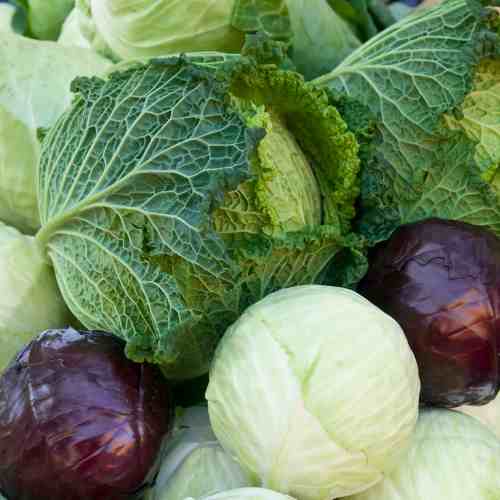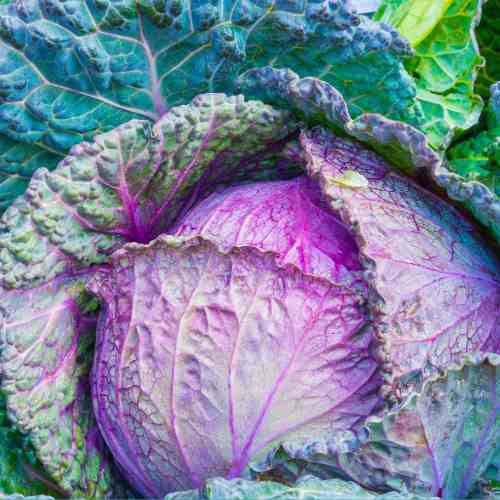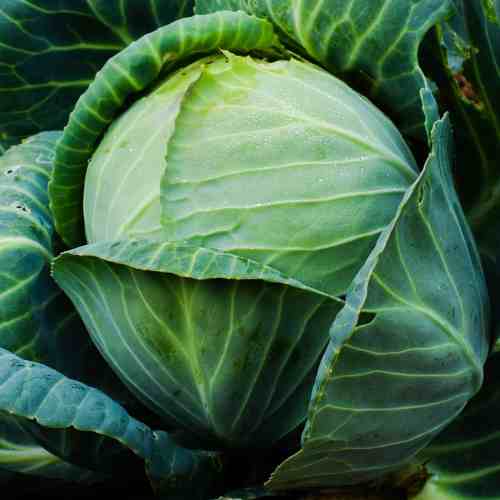How to Grow Cabbage: A Step-by-Step Guide for Gardeners

Cabbage is a versatile, nutrient-packed vegetable that can transform your garden and your plate. Whether you’re a green-thumbed expert or a curious beginner, learning how to grow cabbage is a rewarding experience.
In this guide, we’ll walk you through the process to ensure a healthy, bountiful cabbage harvest.
Get our Gardening Buddy and find veggies that fit your conditions best.
You Can Grow It!
Choosing the Right Cabbage Variety
Cabbage comes in many types, each suited to different climates and culinary needs. The most popular varieties include:
- Green Cabbage: Classic and great for salads or stir-fries.
- Red Cabbage: Adds a pop of color and is slightly sweeter.
- Savoy Cabbage: With its crinkly leaves, it’s perfect for soups and wraps.
Pick a variety that suits your local growing conditions and your cooking preferences.
2. When and Where to Plant Cabbage
Timing is everything in gardening.
- Cool-Weather Crop: Cabbage thrives in cooler temperatures, typically between 55°F and 75°F.
- Planting Season: For spring harvests, sow seeds indoors 6-8 weeks before the last frost. For a fall harvest, plant seeds in midsummer.
Choose a location with plenty of sunlight—at least 6 hours a day. Well-drained, fertile soil is essential for healthy growth.

3. Preparing the Soil for Planting Cabbage
Healthy soil leads to healthy cabbage.
- pH Level: Cabbage prefers slightly acidic to neutral soil with a pH between 6.0 and 7.5.
- Nutrients: Enrich the soil with organic compost or well-rotted manure to provide the nutrients cabbage needs to thrive.
Pro Tip: Rotate your crops! Avoid planting cabbage in the same spot as other brassicas (like broccoli or kale) to reduce the risk of pests and diseases.
4. Planting Cabbage
- Spacing: Cabbage heads need room to grow. Space plants 12-24 inches apart, depending on the variety.
- Depth: Sow seeds about 1/4 inch deep or plant seedlings at the same depth as they were in their nursery pots.
Water thoroughly after planting to help roots establish.

5. Caring for Your Cabbage
Consistency is key when it comes to maintenance.
- Watering: Keep the soil moist but not waterlogged. Cabbage benefits from regular watering, especially during dry spells.
- Fertilizing: Feed your plants with a balanced fertilizer every 3-4 weeks for optimal growth.
- Mulching: Add a layer of mulch to retain soil moisture and regulate temperature.
6. Dealing with Pests and Diseases
Cabbage is a magnet for pests like aphids, cabbage worms, and slugs. Here’s how to keep them at bay:
- Netting: Cover plants with fine mesh to prevent moths from laying eggs.
- Companion Planting: Grow herbs like thyme or dill nearby to repel pests naturally.
- Natural Solutions: Use neem oil or homemade garlic sprays to deter insects.
7. Harvesting Your Cabbage
Cabbage is ready to harvest when the heads feel firm to the touch. Use a sharp knife to cut the head at its base, leaving a few outer leaves intact.
Pro Tip: If you’re feeling ambitious, let the remaining stem sprout “baby cabbages” for a bonus harvest!

Final Thoughts
Growing cabbage might require a bit of patience, but the results are well worth it. By choosing the right variety, tending to the soil, and keeping pests at bay, you’ll enjoy a fresh, crunchy crop in no time. Plus, there’s nothing quite like the satisfaction of eating vegetables you grew with your own hands.
Now, grab your gloves and get planting—you’ve got cabbage to grow!
Get our Gardening Buddy and find veggies that fit your conditions best.
You Can Grow It!
Partners and Sponsors
We are forever grateful to our partners and sponsors. Send an email to team @ strongecho.com and let’s see how we can grow each other’s impact!





